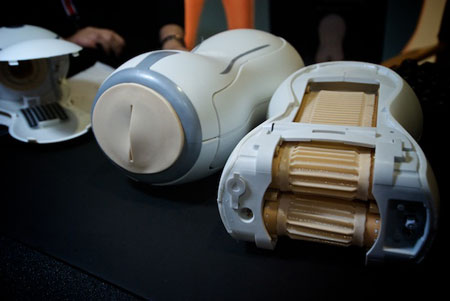
“The internet is for porn.” Given that, pornography addiction and internet addiction frequently show up together in the same discussion. The two have some important features in common being medicalized descriptions of certain sets of behaviors: the problematization of pornography addiction rests in part on the idea that unhealthy levels of consumptions of porn precludes healthy, fulfilling relationships with “real people”. Jenny Davis’s post earlier this week on the “problem with internet addiction” highlights the same issue: the idea that digital interaction is somehow a zero-sum game, wherein more of the “virtual” means less of the “real”, instead of merely a part of the whole of augmented social interaction:
If we understand the internet as a means of sociality, a venue for business communications, an outlet for creativity, a source of news gathering and a space of recreation, then indeed, an addiction to internet technologies would be an addiction everyday life.
Porn is clearly different from this in that it is not properly a “means of sociality” in and of itself. I also don’t intend to argue that one can’t consume porn to a truly unhealthy degree. However, it is worth pointing out again that some of the stigma attached to the consumption of porn and its construction as an unhealthy behavior in general is the idea that it is somehow a lesser, fundamentally inauthentic form of sexual experience and expression. This is intensified in digital porn – which a great deal of porn is now – and with the general sense that any experience mediated by technology must necessarily be less real or less authentic.
We’re presented with an interesting picture, then, when we consider the case of Scott Rinaldo and his pitch on behalf of sex toy maker RealTouch at a sex-tech-themed CES patty this past January. RealTouch is a maker and distributor of remotely controlled sex toys, often to be operated in conjunction with another party over an internet connection. As the linked article points out, the primary target market for this particular kind of toy has, up until now, primarily been consumers who intend to use the toys with paid “cam girls” and other internet-based sex workers. However, Rinaldo lays claim to a more mainstreamly-acceptable use by suggesting that such toys could provide a form of conjugal visit for military spouses whose husbands or wives are serving overseas.

What’s interesting here is what this highlights about the nature of this technology: that, just as with general social interaction, sexual interaction enabled by and mediated through technology presents a more potentially and actually diverse picture than its connotations of inauthenticity allow for. Indeed, the idea of sexual interaction via technology as inauthentic is made additionally problematic if it is somehow “authenticated” through being between conventionally married partners. The point is that here one is presented with people engaged in sexual activity augmented by technology, not replaced by it, and – as I have argued before – the idea that physical co-presence is necessary in order to make the experience emotionally meaningful and “real’ is and should be open to question.
Many of the writers on this blog have repeatedly argued in favor of viewing social interaction as augmented rather than divided between the physical/organic and the digital/technological. What RealTouch and other technologies like it call attention to is the fact that sexual interaction is no exception.
